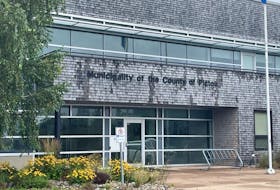TRURO - David Percival had a freezer to check Thursday.
But first he needed permission from the fire marshal.
That’s because the freezers holding samples taken by the plant scientist’s team from blueberry fields are located in the Cox Institute of Agriculture Technology building that was severely damaged by fire June 20.
“We’re really in uncharted territory here,” Percival said June 21.
The samples of blueberry blossoms have to be kept at -80 C to maintain the cellular structure for testing by his team.
Any damage to them would be just one more blow in what has already been a chaotic year for this province’s blueberry industry.
A series of heavy frosts that hit right at peak bloom, when the vine’s delicate flowers are most susceptible to damage, nearly wiped out this year’s potential crop.
While initial estimates were that 50-plus per cent of the flowers were destroyed, Percival said Thursday that he “wouldn’t be surprised if it turned out to be 70 per cent.”
Initially it was Cumberland and Colchester counties, along with many areas of the Annapolis Valley, that were hit.
But a series of frosts since then in Pictou and Antigonish counties have wiped out many growers there.
In East River St. Mary’s, John Cameron was preparing to spray fields of the biannual crop that will bloom next year.
“It’s still early to tell, but we’re feeling that it’s bad, like 80 per cent bad,” said Cameron.
“That means what’s left would not be worth harvesting.”
Prices had already dipped well below the price of production over the last two years and most growers didn’t buy crop insurance for this season because it was only offering to pay out 15 cents a pound.
That would be less than half what many growers say they need to be paid to be profitable.
“We’re still in hope that it’s not as bad as we think it is,” said Cameron.









